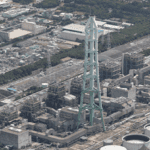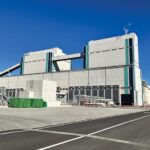Japan’s government on July 3 approved a new Basic Energy Plan for the country, saying it is committed to increasing the role of renewable resources for power generation while also confirming it wants nuclear power to remain a vital part of the nation’s energy strategy.
Japan issues a revised Basic Energy Plan, which outlines the country’s mid- and long-term energy policy, every few years as required by law. The plan issued today is the second under the administration of Prime Minister Shinzo Abe. The new plan is first time Japan has announced a commitment to renewable energy such as solar and wind, though it noted widespread adoption of renewable resources could be limited by the country’s fluctuating weather. The plan also says renewables will include batteries and hydrogen-based technologies.
The new plan says the country will continue to rely on coal-fired power generation as a baseload energy source, even as it discusses ways to reduce carbon emissions in its energy sector. Japan has a goal of an 80% reduction in greenhouse gas emissions in fiscal 2050 from 2013 levels.
At least eight new coal-fired plants have come online in Japan over the past two years, and there are plans to build at least three dozen more over the next decade. The government in early 2017 said it wanted to build new plants using high energy, low emissions (HELE) technology, which some experts say enables a plant to produce half the emissions of a traditional coal plant.
The Abe administration’s first energy plan in 2014 promoted nuclear energy and reversed the policy of the previous government, which pledged to phase out nuclear power by 2039 due to public concern about safety after the Fukushima nuclear disaster in 2011. Japan took all its nuclear units offline after Fukushima, rewrote its safety regulations, and said reactors needed to pass rigorous inspectionsbefore being allowed to re-enter commercial operation. The new energy plan does say safety is a priority and says the nation will cut dependence on nuclear power generation “as much as possible.”
The new plan lists targets for the country’s energy mix in 2030, with nuclear at 20-22%, renewables at 22-24%, and coal at 26%, mostly in line with previous levels. Energy analysts said about 30 of the country’s reactors would need to be restarted to reach the nuclear target; just eight have come back onlinepost-Fukushima; a ninth, Unit 4 at Genkai, is expected to re-enter commercial operation this month. Some companies have discussed building new reactors—Tokyo Electric Power Co. Holdings Inc. (TEPCO) last week said it plans to resume its planned Higashidori nuclear plant project in Aomori Prefecture, which was suspended after Fukushima—though the new plan makes no mention of new nuclear facilities.
Construction of the first of two reactors at Higashidori began in January 2011 but was stopped after March 2011 Fukushima incident. TEPCO said its plans for the plant still include two advanced boiling water reactors with total generation capacity of 2.77 gigawatts.
The latest energy plan says the government will maintain its nuclear policy, noting its importance to the Abe’s administration’s strategy for expanding the Japanese economy. According to the Basic Energy Plan, “Japan is determined to make a positive contribution to enhancing the safety of nuclear energy and the peaceful use of nuclear energy” through exports of nuclear plants.
The government’s plan for more coal plants is part of a strategy developed due to concerns about power demand outstripping power supply as nuclear plants went offline after Fukushima. The country’s coal strategy includes funding for new technologies to reduce emissions; Japan earlier this year said the Japan Coal Energy Center and Kawasaki Heavy Industries would spend $9 million to fund research into carbon capture at a facility near Gillette, Wyoming. It follows a 2016 agreement Wyoming Gov. Matt Mead signed to collaborate with the Japan Coal Energy Center for research and technology.
The country also is participating in research for using coal as an energy source for hydrogen-powered vehicles. Kawasaki Heavy Industries and Australia are working together at a $390 million pilot plant in Melbourne, Australia, that would turn coal into hydrogen gas.
—Darrell Proctor is a POWER associate editor (@DarrellProctor1, @POWERmagazine).










